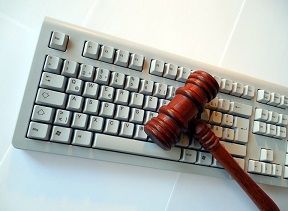Although the protection strategy has changed, the answer is yes.
Until recently, software patents accounted for about half of all utility patents issued by the USPTO. Application of a 2014 U.S. Supreme Court case, Alice v. CLS Bank, effectively slammed the door on this practice. Likewise, software patents issued prior to this decision have been routinely stricken down by the courts as invalid. Only a small number of utility software patents have still been allowed at the expense of nuanced arguments and arduous appeals. However, there remains a variety of methods when used in combination that can arguably give broader legal protection with numerous practical advantages to the software industry.
The strategy involves dividing software into tiers, and protecting each tier differently. It also involves taking advantage of newly passed federal legislation that protects a company domestically and abroad.
Most software can be divided into several levels including a user interface, application programming interfaces (APIs), algorithms and data structures.
- Level One: User Interface
This involves how the user interacts with the program. The success of most software depends on the aesthetics of its user interface, i.e. how it is displayed. A design patent may be used to protect the design of the user interface. This provides a distinct advantage over solely protecting the source code, since source code can easily be drafted in several different manners to achieve the same or similar look. - Level Two: API
This involves how the software is used by another program. The API may be protected by two areas of law. One of those areas is copyright according to a 2014 decision by the Federal Circuit, Oracle America Inc. v. Google Inc. The other area is trade secret. However, because APIs generally don’t expose the underlying substantive program and portions of a copyright submission may be redacted, registering an API with the copyright office is a good strategy. - Level Three: Algorithms and Data Structures
This includes the substantive features of the software. This level may be protected by trade secret law. In 2016 the Defend Trade Secrets Act (DTSA) was passed giving a civil cause of action in federal court for trade secret violations. Previously, trade secret actions had been governed by varying and disjointed state laws. The DTSA allows software proprietors to sue both domestic and foreign infringers and gives instant protection to properly guarded trade secrets. Furthermore, by protecting the underlying algorithm, software proprietors are afforded broader protection on functionality rather than just protecting narrowly written source code.
To properly protect a trade secret, businesses should use carefully drafted non-disclosure agreements, access control its programmers, and limit the amount of time electronic documents remain active after transmission. Having a law firm implement a business’ risk management structure before a problem arises can strengthen trade secret protection when it comes time to enforce the right through litigation.
If you have questions or concerns related to protecting your company’s software, please contact us at (321) 255-2332.


